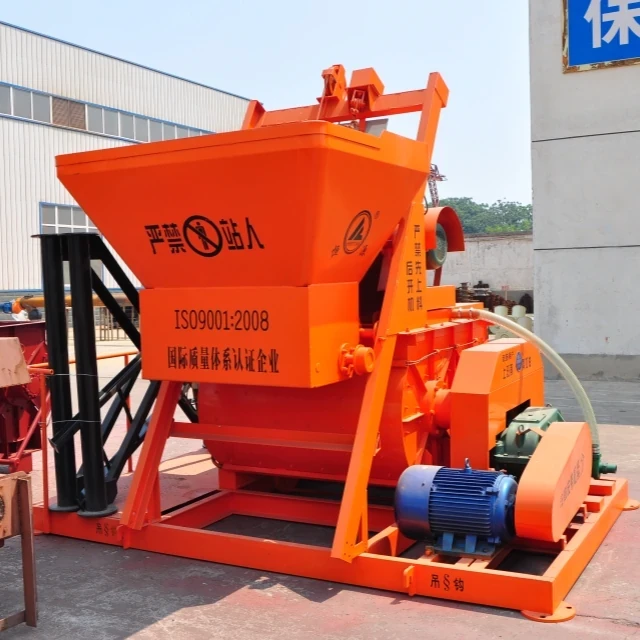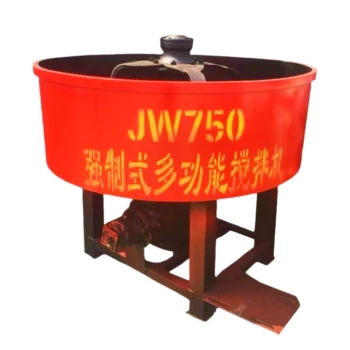The concrete industry faces mounting pressure to reduce its environmental footprint while maintaining production efficiency. This guide reveals proven strategies for integrating green technologies into mixing stations—from dust suppression systems to AI-driven emission monitoring—that cut pollution without compromising performance.
Sustainable Production Infrastructure Design
Modern concrete mixing stations require infrastructure designed for circular material flows and energy conservation. The most effective systems combine closed-loop handling with intelligent mixing technologies.
Closed-Loop Material Handling Systems for Dust Suppression
Dust accounts for 60% of particulate emissions in concrete production. Leading plants now implement:
- Vortex-based capture systems that redirect airborne particles back into mixing cycles
- Moisture-controlled conveyor belts with embedded sensors to maintain optimal humidity
- Recycled water circuits for washout processes, reducing freshwater consumption by up to 80%
Ever wondered how cement silos can become dust-neutral? Advanced designs use negative pressure zones and automated sealing flaps to prevent material escape during loading.
Energy-Efficient Mixing Technologies and Noise Mitigation
Variable frequency drives (VFDs) in mixers demonstrate how sustainability aligns with cost savings:
- Precision power modulation reduces energy waste during partial-load operations
- Soft-start capabilities decrease mechanical stress and maintenance needs
- Noise-dampened enclosures with composite materials cut ambient sound by 15 decibels
A 2023 case study showed VFD-equipped stations achieving 22% lower kWh consumption per cubic meter compared to traditional systems.
Emission Control and Monitoring Solutions
Regulatory compliance now demands real-time emission tracking paired with active mitigation measures.
Multi-Stage Dust Removal: From Bag Filters to AI-Driven Optimization
Progressive plants employ a three-phase defense:
- Primary cyclones capture coarse particles (>10μm)
- Pulse-jet bag filters trap fine particulates (2.5-10μm)
- AI-controlled electrostatic precipitators target sub-micron residues
The system at Norway's Oslo Concrete plant uses machine learning to predict dust generation patterns, adjusting suction power dynamically to maintain 99.97% filtration efficiency.
Real-Time Emission Tracking and Compliance Assurance
IoT sensor networks transform environmental management through:
- Continuous PM2.5/PM10 monitoring with automated reporting
- Predictive analytics that alert operators to potential violations
- Blockchain-based audit trails for regulatory transparency
Did you know? Smart stations can now correlate weather data with emission readings to anticipate dispersion patterns—preventing community impact before it occurs.
Operational Excellence and Case Validation
Transitioning to green technologies requires careful economic analysis and lessons from successful implementations.
Cost-Benefit Analysis of Eco-Equipment Adoption
Breaking down ROI for common upgrades:
| Technology | Upfront Cost | Annual Savings | Payback Period |
|---|---|---|---|
| VFD Mixers | $18,000 | $7,200 | 2.5 years |
| Dust Recycling | $32,000 | $11,000 | 3 years |
| IoT Monitoring | $9,500 | $3,800 | 2.5 years |
The hidden value? Avoiding non-compliance fines averaging $74,000 per violation in the EU.
Global Case Studies: Successful Green Concrete Stations
-
Singapore's Zero-Waste Plant
- Achieved 98% material reuse through closed-loop aggregates
- Solar-powered mixers cut grid dependence by 40%
-
California's Carbon-Neutral Facility
- Biofuel-powered Garlway winches for material handling
- Carbon capture systems offset 12,000 tons/year
-
Germany's "Silent Concrete" Initiative
- Noise levels below 55dB at property lines
- Nighttime operations permitted due to soundproofing
Moving Forward: Your Action Plan
- Start with an energy audit to identify high-impact upgrades
- Phase in IoT sensors before major equipment overhauls
- Train staff on predictive maintenance to extend green tech lifespan
The future belongs to plants that treat sustainability as a productivity lever—not just compliance. By implementing these systems, your station can become both an environmental leader and a benchmark for operational excellence.
For material handling needs in eco-conscious projects, explore Garlway's range of energy-efficient winches designed for sustainable construction sites.
Products You Might Be Looking For:
Explore eco-friendly concrete batching plants
Related Products
- HZS75 Concrete Batching Plant Cement Mixer Price Concrete Mixer Bunnings Mixing Plant
- HZS180 Ready Mix Concrete Plant for Foundations with Sand and Cement
- Portable Concrete Mixer Machine Equipment for Mixing Concrete
- JW1000 Mobile Cement Mixer Concrete Mixer Truck and Batching Plant
- HZS120 Ready Mix Concrete Batching Plant Commercial Mud Cement Mixer
Related Articles
- How to Operate Concrete Mixing Stations in Winter: Protecting Equipment and Ensuring Quality
- How to Choose Between Concrete and Stabilized Soil Mixing Plants for Optimal Project Performance
- How Commercial Concrete Mixing Plants Cut Costs and Boost Project Flexibility
- How to Prevent Water Supply Freezing in Concrete Mixing Stations: Winter-Proof Strategies
- How to Protect Concrete Mixing Stations From Extreme Weather Damage














